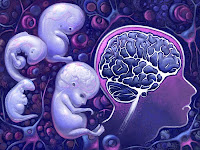Robustness and fragility in neural development

So many things can go wrong in the development of the human brain it is amazing that it ever goes right. The fact that it usually does – that the majority of people do not suffer from a neurodevelopmental disorder – is due to the property engineers call robustness . This property has important implications for understanding the genetic architecture of neurodevelopmental disorders – what kinds of insults will the system be able to tolerate and what kind will it be vulnerable to? The development of the brain involves many thousands of different gene products acting in hundreds of distinct molecular and cellular processes, all tightly coordinated in space and time – from patterning and proliferation to cell migration, axon guidance, synapse formation and many others. Large numbers of proteins are involved in the biochemical pathways and networks underlying each cell biological process. Each of these systems has evolved not just to do a particular job, but
